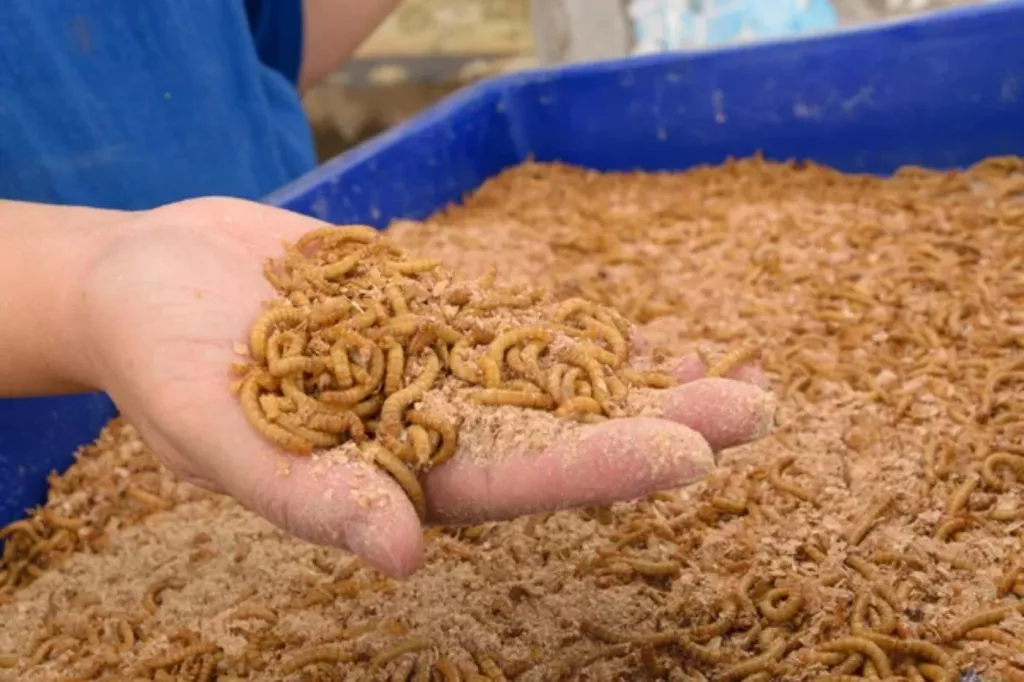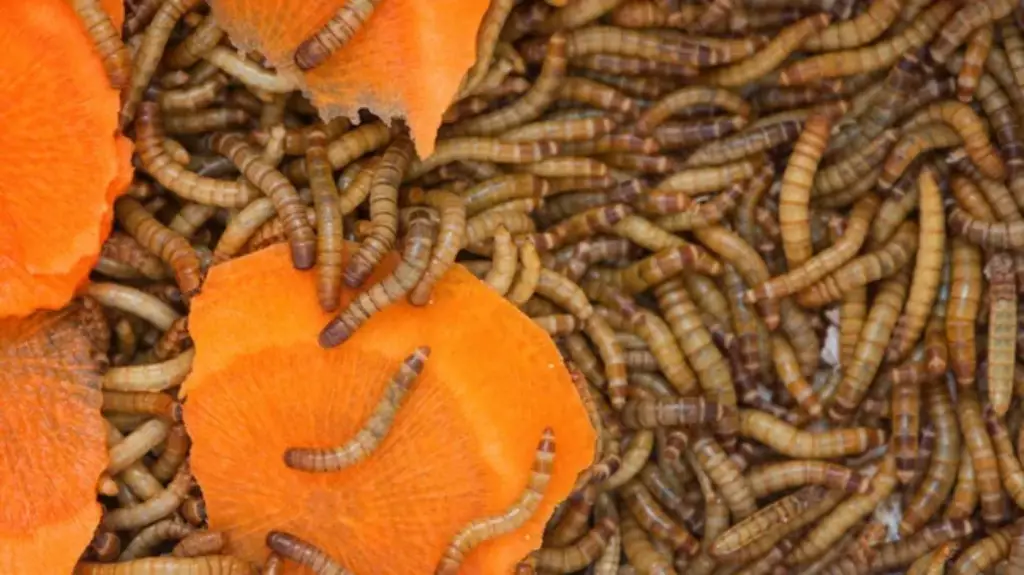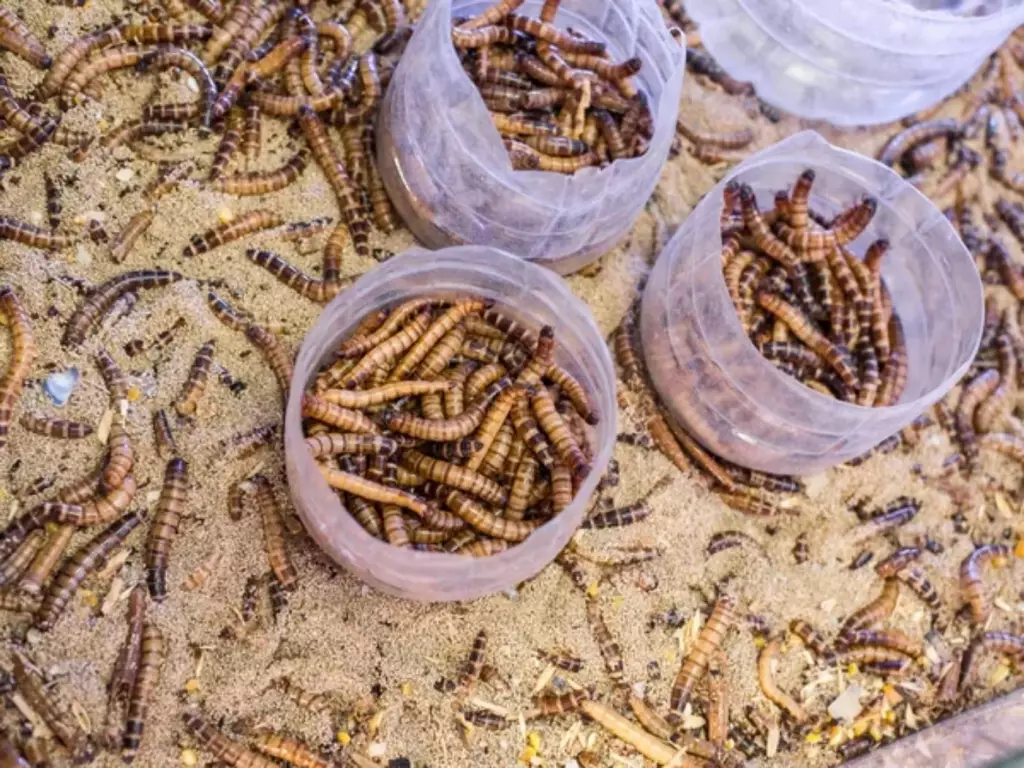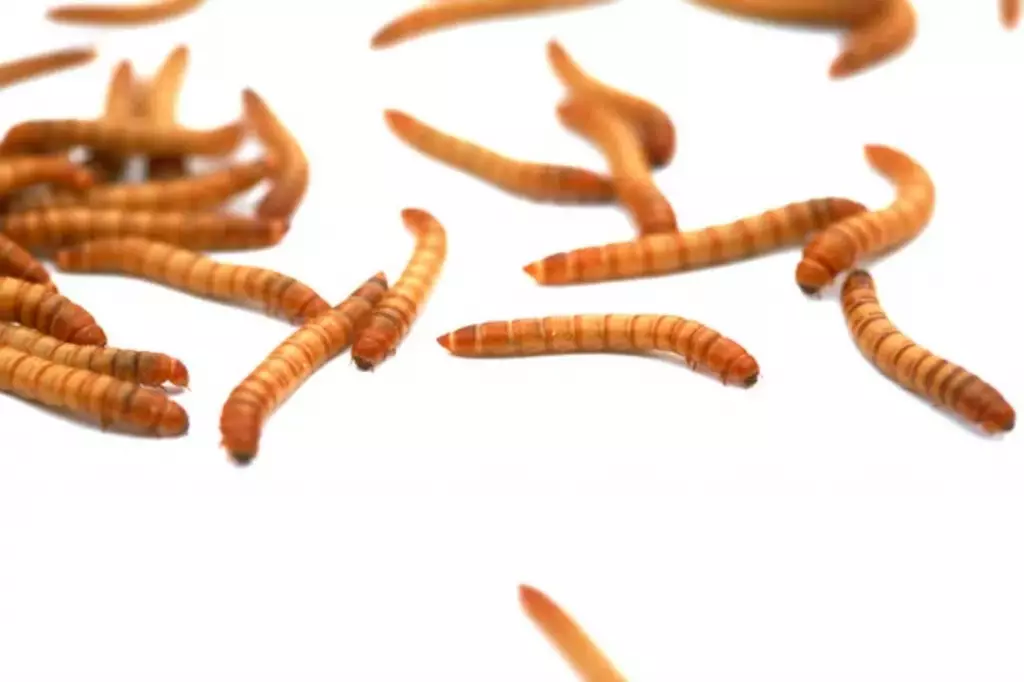Is Mealworm Farming Profitable? (2024 Breakdown)
Mealworms, the larvae of the darkling beetle, are gaining popularity in the sustainable food market for their high protein content. In 2024, the farming of these insects will emerge as a notable eco-friendly and potentially profitable business. In this article, we'll explore the financial viability of mealworm cultivation in today's market.
Mealworm farming can be a profitable venture, considering its low maintenance and basic skill requirements. If you sell 10,000 mealworms monthly at $20 per 1,000, your gross income would be around $200. Subtracting the maintenance costs of about $50, the net profit stands at around $150.
Additionally, by selling byproducts like frass as fertilizer for $5 to $15 per bag, you can further increase your earnings. Let's take a closer look at how you can reduce expenses while increasing your earnings in this rising industry
Summary
- Profit margins for mealworm farming can potentially range from around 20% on the low end to over 50% on the high end.
- Setting up a mealworm farm requires a considerable initial investment, around $500 to $1,350, primarily for containers/trays, substrate, breeding stock, and essential systems like temperature control, ventilation, and lighting.
- Effective breeding techniques to expedite the progression of mealworms from eggs to larvae can result in savings of 10-15%, and similarly, optimizing the larva to pupa and pupa to adult stages can yield additional savings of 5-10% and 3-5%, respectively.

On this page:
Mealworm Farming Can Be Profitable
Embarking on mealworm farming can be a pathway to a profitable venture, especially when you consider the potential profits relative to the capital and low maintenance requirements.
How much money can you make selling mealworms?
Selling mealworm products can bring in varying amounts of income, which will depend on your market and scale of operation. Below is a simplified profit breakdown:
-
Estimated capital costs
- Initial setup (containers, storage, breeding stock): $500 - $1,000
- Feed and maintenance (per month): $30 - $50
-
Estimated revenue
- Sales of live mealworms (per 1,000 units): $10 - $30
- Byproducts (e.g., frass as fertilizer): $5 - $15 per bag
Given these estimates, if you sold 10,000 mealworms per month at an average price of $20 per 1,000, your gross revenue would be approximately $200. With monthly costs of around $50 for maintenance, your net profit could be around $150.

Calculating the profit margin from selling mealworms
To calculate the profit margin, let's use the following data:
- The farm produces 10,000 lbs of mealworms per year
- The farm sells mealworms for $3 per lb
- Annual revenue = 10,000 lbs x $3 per lb = $30,000
Expenses:
- Materials & equipment = $5,000
- Labor = $8,000
- Utilities = $1,000
- Other overhead = $1,000
- Total expenses = $15,000
Profit margin calculation:
- Net profit = Revenue - Expenses = $30,000 - $15,000 = $15,000
- Profit margin = Net profit / Revenue x 100 = $15,000 / $30,000 x 100 = 50%
A rough industry range for profit margins in mealworm farming is estimated to be 20% to over 50%. However, note that it can potentially exceed 50%, as it greatly depends on how the farm is managed, the efficiency of production, and market conditions.
Costs Involved in Mealworm Farming
Initial setup costs to establish a mealworm farm
The initial setup for your mealworm farm includes procuring containers or trays, which are essential for housing your mealworms.
You will need to invest in quality substrates, such as wheat bran, for bedding and food. Starting small might help you control expenses and evaluate the market.
| Item | Estimated Cost Range ($) |
|---|---|
| Containers/trays | $50 - $200 |
| Substrate (wheat bran) | $30 - $100 |
| Breeding stock | $100 - $300 |
| Temperature control system | $150 - $500 |
| Ventilation system | $50 - $200 |
| Lighting equipment | $40 - $150 |
Cost of purchasing containers/trays
These are used for housing the mealworms. They should be spacious enough for the mealworms to grow and easy to clean. The cost varies depending on size and material quality.
Cost of buying substrate
This serves as both bedding and food for the mealworms. Wheat bran is a popular choice due to its nutritional value and affordability. The cost depends on the quantity and quality.
Cost of acquiring the breeding stock
This refers to the initial population of mealworms used for starting the farm. It's crucial to purchase healthy, high-quality breeding stock to ensure a successful and sustainable farm. You can get your first set of mealworms here.

Cost to install a temperature control system
Mealworms require a specific temperature range to thrive. This system could include heaters or coolers to maintain optimal conditions. Costs vary based on system complexity and capacity.
Cost to put up a ventilation system
Proper air circulation is vital for the health of the mealworms. A good ventilation system prevents humidity buildup and maintains air quality. The cost depends on the size and type of system needed.
Cost of purchasing lighting equipment
While mealworms don't require much light, some lighting might be necessary for inspecting and managing the farm. This includes simple light fixtures and bulbs, with costs varying based on the lighting technology and scale of the setup.
Maintenance costs in a mealworm farm
Your mealworms' environment is critical to their growth cycle. You'll need to ensure a consistent temperature which may require a heating solution. Regular food supply and replacing the substrate add to the recurring costs.
| Item | Estimated Cost Range ($) |
|---|---|
| Temperature control | $20 - $100 |
| Food (oats, vegetables, etc.) | $10 - $40/month |
| Substrate replacement | $5 - $25/month |
| Regular cleaning supplies | $10 - $30/month |
Costs for maintaining optimal temperature
This covers the costs of devices and utilities needed to maintain the optimal temperature for mealworms. It may include heaters or cooling systems, depending on the climate.
Cost for constant food supply
Mealworms require a consistent supply of food. Common choices include oats and fresh vegetables.
Cost for substrate replacement
The substrate, such as wheat bran or oatmeal, serves as both bedding and supplementary food. It needs regular replacement to maintain hygiene and nutrition levels. The cost depends on the size of the farm and the frequency of replacement.
Cost of purchasing regular cleaning supplies
Maintaining cleanliness is crucial for a healthy mealworm environment. This includes the cost of cleaning agents, tools, and materials used for the regular upkeep of containers and equipment.
Operational expenses in a mealworm farm
Day-to-day operation includes the manual labor of sorting the mealworms and conducting market research to stay competitive. Don’t forget the smaller supplies like feeders or water dispensers that need occasional replacement.
| Item | Estimated Cost Range ($) |
|---|---|
| Manual labor | Based on local labor rates |
| Supplies | $5 - $25 |
| Market research | Varies based on method |
| Utilities (electricity, water) | $20 - $100/month |
| Packaging and shipping | $10 - $50/order |
| Insurance | $30 - $100/month |
| Website and marketing | $25 - $150/month |
| Equipment maintenance | $15 - $50/month |
Manual labor costs
This cost covers the wages for staff involved in daily tasks like sorting mealworms, farm maintenance, and handling. The rate is determined by local labor market conditions.
Supply costs
This includes minor but essential items such as feeders, water dispensers, and other small tools. These supplies need occasional replacement or replenishment.
Cost of conducting market research
Costs for conducting market analysis to understand trends, pricing, and consumer preferences. It can include surveys, data analysis, and consultation fees, varying greatly depending on the approach.
Payment for utilities
This covers the cost of basic utilities like electricity for lighting and temperature control systems, and water for farm maintenance. The range depends on usage and local utility rates.

Packaging and shipping costs
Expenses related to preparing and delivering mealworm products to customers. This includes the cost of packaging materials and shipping fees, varying per order based on size and destination.
Cost to avail of insurance
Cost for insurance policies to protect the farm business against risks like property damage, liability, and other unforeseen events. Premiums vary based on coverage levels and farm size.
Cost to develop website and upscale marketing
Expenditure on digital presence, including website hosting, maintenance, and marketing activities like online advertising and social media campaigns. Costs vary based on the scale and intensity of marketing efforts.
Costs for equipment maintenance
Regular upkeep and repair costs for farming equipment to ensure optimal operation. Includes routine checks, part replacements, and repairs, with costs depending on the frequency and nature of maintenance.
How to Reduce Costs and Increase Profits in Mealworm Farming
In mealworm farming, profitability hinges on your ability to reduce expenses while increasing your earnings. By focusing on the breeding lifecycle, streamlining operations, and employing strategic marketing and sales approaches, you can create a successful commercial enterprise.
Have a firm grasp of the mealworm life cycle
Starting with eggs, progressing to larva, then pupa, and finally adult beetles, each stage requires specific care. For example, keeping your containers at the optimal temperature for pupation and metamorphosis is crucial.
Optimal temperature and humidity, along with suitable bedding and lighting, can significantly impact your mealworms' growth rates and survival, directly influencing your production quantity.
| Life Stage | Optimal Growth Range |
|---|---|
| Larvae | 75-80°F, 70% humidity |
| Pupae | 70-75°F, 50-60% humidity |
| Beetles | 65-70°F, 40-50% humidity |
Effective breeding techniques that increase the number of eggs laid and reduce the time to reach the larva stage can drastically improve your output. Low-maintenance approaches that still maintain hygiene and mealworm farm maintenance are essential.
Here's a breakdown of potential cost savings from lifecycle management:
| Lifecycle Stage | Estimated Savings Range |
|---|---|
| Eggs to larva | 10-15% |
| Larva to pupa | 5-10% |
| Pupa to adult | 3-5% |
You can learn more about the lifecycle of mealworms in this article.
Focus on cost efficiency practices
Operational costs can be minimized by automating manual processes where possible, ensuring your mealworm farm maintenance is low maintenance, and selecting the right container type and size to optimize space and resources.
Regularly review your operations to identify areas where you can save time and resources without compromising the nutritious value of your product. For instance, bulk purchasing of packaging supplies for your animal feed products can lead to significant cost reductions.
Additionally, minimizing costs related to the consumption of bedding materials, energy for maintaining ideal environmental conditions, and water is key.
Adopting energy-efficient practices such as using LED lighting and monitoring water consumption can help trim down expenses.
| Resource | Cost-saving Range |
|---|---|
| Bedding | $10-$20 per month |
| Lighting | $5-$15 per month |
| Water | $1-$5 per month |
By optimizing production around the needs of mealworms and the demands of the market, and implementing cost-saving measures, you set your farm up for a higher chance of achieving a favorable profit margin.
Strategize your marketing to boost sales
Your profit is directly tied to how well you market and sell your mealworms. Identifying your target market—such as pet stores, hobbyists, or the broader feed market—is crucial.
Developing a robust online presence can help you reach a larger customer base and tap into the commercial and residential segments interested in nutritious animal feed and pet food. Online platforms can also offer better margins compared to traditional retail channels.
Where to Sell Mealworms
Mealworm farming can be an economical way to enter the agricultural space, serving various customer bases with your product.
| Customer Base | Estimated Price Range per 1000 Mealworms |
|---|---|
| Pet stores | $20 - $30 |
| Reptile enthusiasts | $10 - $25 |
| Online marketplaces | $15 - $35 including shipping |
| Bird breeders/rehabilitators | $15 - $25 |
| Bait shops | $10 - $20 |
| Organic farms | Bulk pricing varies |
You can sell mealworms to pet stores and reptile enthusiasts
Primarily, pet stores are a great avenue to explore. Your mealworms offer a high-protein diet for pets like reptiles, birds, and fish.
Networking with local pet store owners can lead to steady sales. Reach out to reptile enthusiasts through community forums and social media groups to become a trusted supplier.
You can explore online marketplaces
Consider listing on online marketplaces such as eBay or Amazon. This expands your reach and provides an easy platform for customers to purchase your mealworms. Be sure to account for shipping when determining pricing to maintain your profit margins.

Create a good deal for bird breeders and wildlife rehabilitators
Bird breeders and wildlife rehabilitators often need a consistent supply of mealworms. Establishing a relationship with them can ensure you have a dedicated clientele.
Sell to fishing bait shops
Mealworms serve as excellent fishing bait. Partnering with local bait shops can offer another lucrative sales channel.
Sell in bulk to organic farms
Mealworms are also used in organic farming as a natural form of pest control and fertilization. Contacting organic farms in your area might lead to bulk sales.


